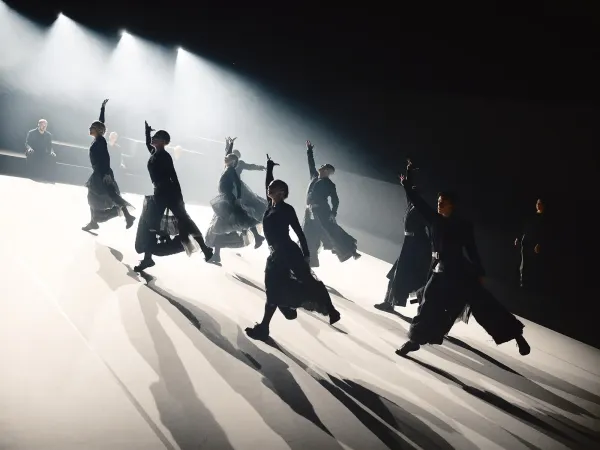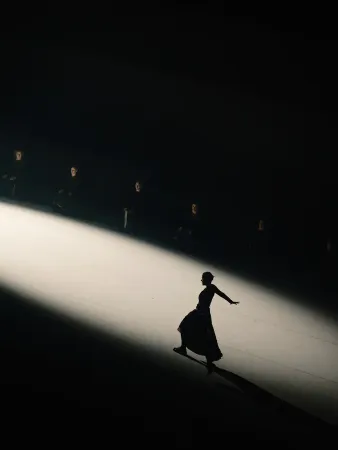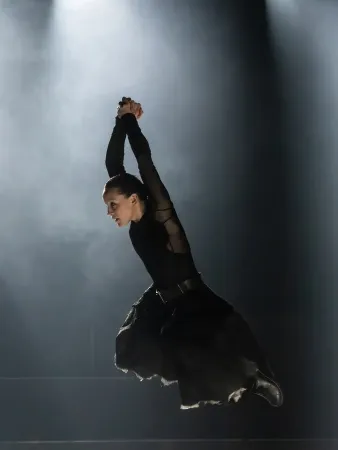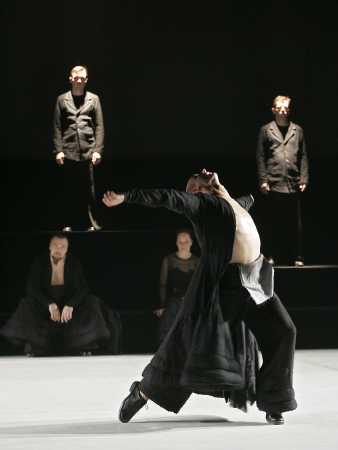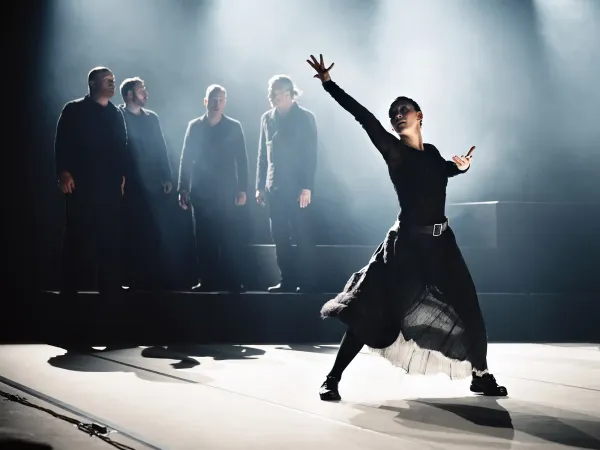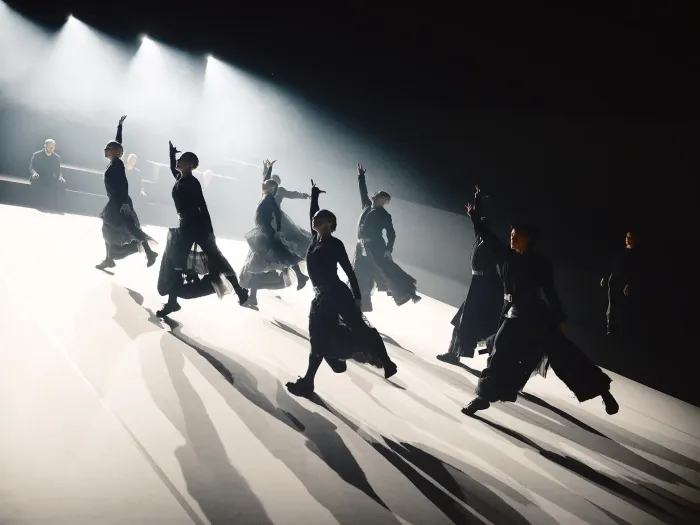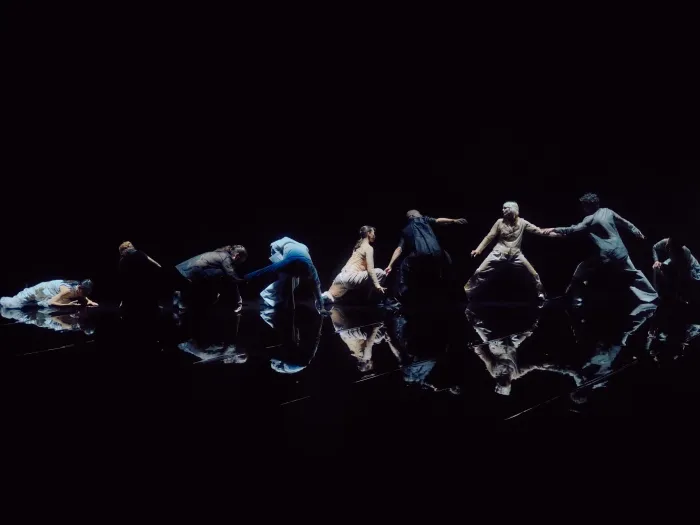Text: Florian Amort
The text was published in edition 3 (06/25).
Reading time 3 Min.
Community in Motion
Borrowed Light – Tero Saarinen’s hypnotic fusion of dance, music, and light – celebrates its Austrian premiere in the upcoming festival summer at the Bregenzer Festspiele after an unprecedented international success.
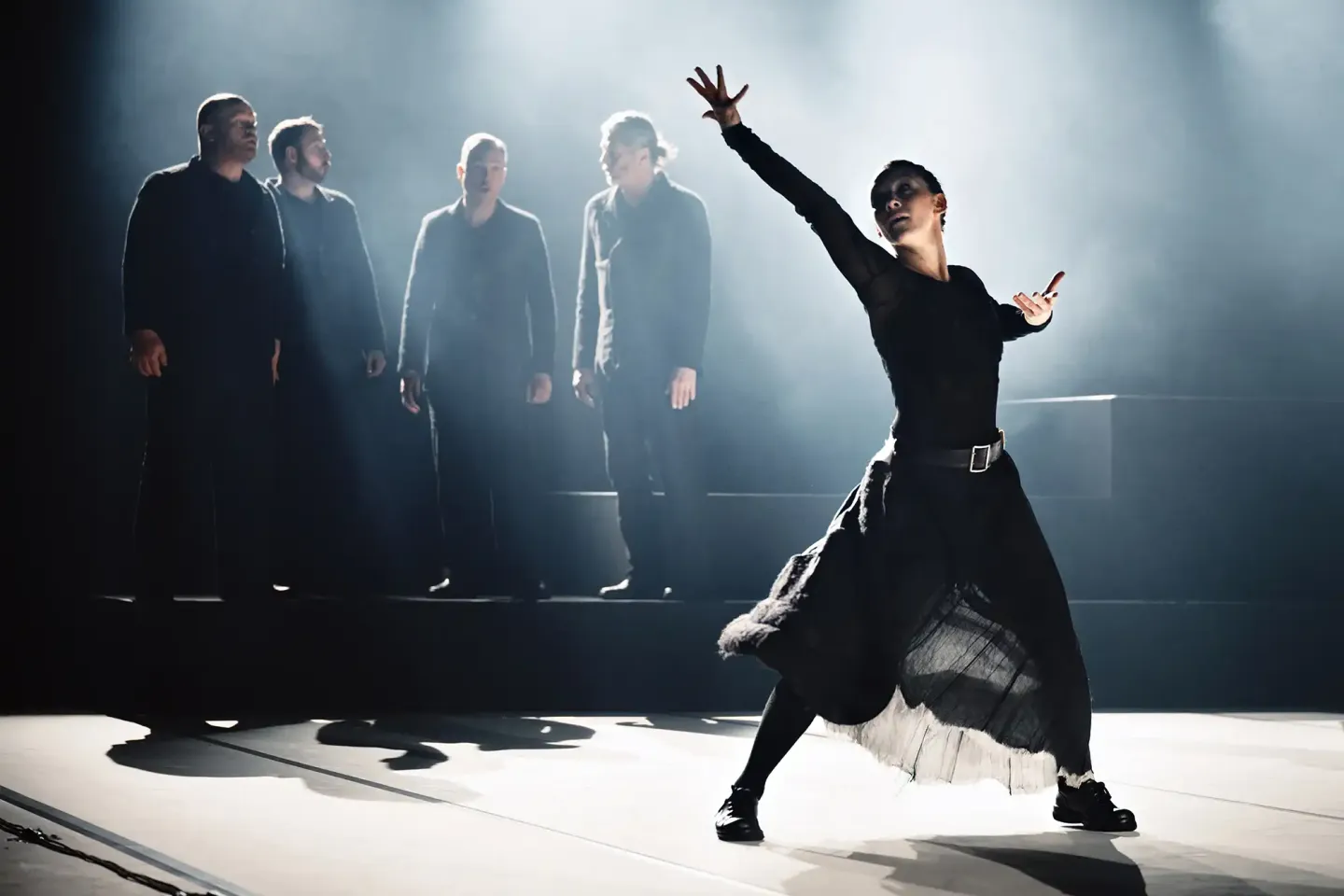
What connects an 18th-century religious movement with contemporary dance? Why do we turn our gaze today – amidst an increasingly fragmented and uncertain world – to a way of life that embodied radical simplicity, spirituality, and equality? In his internationally acclaimed production Borrowed Light, the Finnish choreographer Tero Saarinen brings the fascinatingly unfamiliar world of the Shakers to life – not as a historical representation, but as a poetic reflection on community, idealism, and the fragility of collective living.
Borrowed Light is a creation of poignant clarity and emotional force. Developed in 2004 in collaboration with The Boston Camerata – one of the most renowned vocal ensembles for early music – the work draws its sonic foundation from sixteen a cappella singers performing Shaker songs. These modal melodies, marked by austere beauty and spiritual fervor, define the piece’s tonal character. Rooted in English folk traditions, they strike with an impact that is immediate, archaic, and almost trance-inducing.
The Shakers: Equality, Trance, Clarity
The “United Society of Believers in Christ’s Second Appearing,” as the Shakers officially called themselves, split from the Quakers in the 18th century and emigrated to the United States in 1774 under the leadership of the charismatic Ann Lee. The Shakers established 19 communities, lived celibately, shared all property, believed in gender equality, and categorically rejected violence. For them, work was akin to prayer: “Hands to work, hearts to God.”
Shaker communities followed strict rules: Their spiritual and social order was consistent, but also uncompromising – to the point of becoming unsustainable over time. New members were only added through conversion or adoption; biological offspring were excluded due to celibacy. Today, only one person still lives according to Shaker principles. The history of this movement thus shows not only the ideal of a lived community but also its limits when no space is left for change or growth.
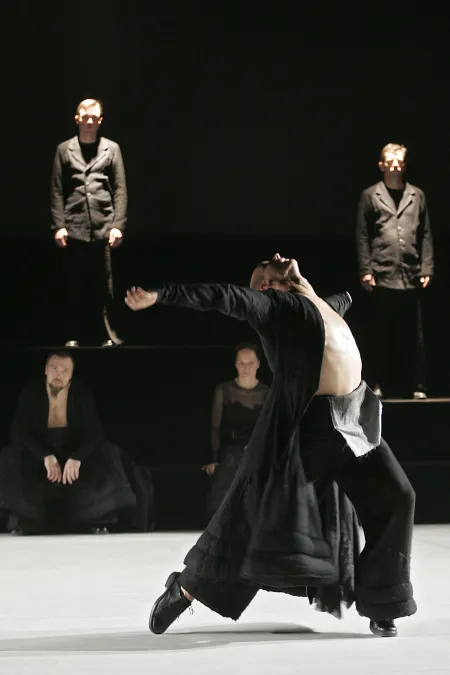
The Shakers became known above all for their ecstatic worship services, which evolved over decades into choreographed rituals of song and dance. Their music was not born of professionalism but of inner inspiration: Hundreds of simple believers composed thousands of songs, many of them preserved only in handwritten form. Borrowed Light presents many of these pieces outside a religious context for the first time.
Sound Turned into Architecture
The Shakers believed in the spiritual power of clarity – in both thought and material. Their furniture is still considered an icon of functional aesthetics. Their meetinghouses also reflect this principle: built on hollow wooden structures that, like the soundbox of a guitar naturally amplified singing and dance steps – music, movement, and space were woven into an inseparable unity.
Tero Saarinen translates this spirit into a highly precise, deeply felt movement vocabulary. In Borrowed Light, dancers and singers share the stage, their bodies and voices intertwined in a ritual stream: spiraling gestures, synchronous formations, intense solo moments, sustained transitions. It is a dance that comes as much from the body as from the soul – guided by an ascetic aesthetic and a deep belief in the power of togetherness.
Saarinen is not concerned with folkloristic quotation. Rather, he pursues the question: What holds communities together? What are we willing to give up in order to achieve something together? Where does trust end – and where does blind idealism begin? “At its core, the essence of community remains the same,” Saarinen says. “Whether political, religious, or artistic – it always comes down to trust, compromise, and the longing for something greater.” When Borrowed Light premiered in 2004, Saarinen’s company was just ten years old – a fragile structure sustained by idealism. Now, on the occasion of the Tero Saarinen Company’s 30th anniversary, the piece returns: matured, open to new voices, carried by a new generation of performers.
Whether political, religious, or artistic – it always comes down to trust, compromise, and the longing for something greater.
Borrowed Light, Shared Hope
The title Borrowed Light refers to an architectural practice of the Shakers: In the absence of artificial lighting, rooms were built to “borrow” light from adjoining spaces through windows and openings. Saarinen elevates this motif to a metaphorical level: light as a symbol of human connection. Of what we give one another – our energy, our ideas, our compassion. In a time when social cohesion threatens break down in many places, Borrowed Light unfolds a quiet, powerful vision: that through shared striving, through collective expression and mutual trust, we can forge a new sense of belonging.
Borrowed Light is not a loud production. It is a focused ritual, a meditative choreography. It offers no simple answers, but it creates space for questions – about faith, belonging, and the delicate balance between self and community. Joel Cohen, musical director of the original production, puts it best: “This music celebrates the best in the US-American spirit: love, peace, community. May it remind us of what can be lasting and beautiful.”



